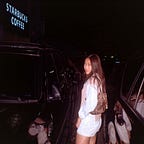Art & Design: a sibling rivalry
When I first encountered the concept ‘User Experience Design’, my mind immediately envisioned a Pinterest board that stimulated pure visual pleasure. I thought of pretty layouts, complementary colors, interactive animations, and of course, a cutesy mouse cursor. The types you’d see on creative portfolio platforms — Dribble, Behance, and the like. “How neat. This is definitely something I want to get into.” I remember exclaiming.
Unbeknownst to me, a big majority of the screen designs I found back then were merely products of artistic whims, not real UX projects. Though its most exterior layer looked immensely gorgeous, its user experience, not quite. What I (and many others) failed to note is that it is called User Experience Design — not User Experience Art for a very distinct reason. Though at face value they can be mistaken to mean the same thing, there lies a fundamental difference: its intent.
“Design is not art. Design has to function.”
Art is created to express, to inspire, to spark conversations, but solving problems is not exactly in its field of expertise. What is invisible to the naked eye is at times the most important part of the whole design process.
The unsung hero: UX Research
I love hot pink, and I sure would love a hot pink website. But if 90% of my users say they’d prefer a subtle, boring, slate grey over MY hot pink, then Houston, we have a problem. When conducting user research, it’s important to take note that you are not your user. This phrase has been quoted in over millions of UX articles; so cliche — I know, but I believe it is overused for a reason.
UX Research can transform baseless designs into working products. It can also build an intuitive, effective, beauty of an application from ground up based on a library of user inputs and responses. UXR is the founding pillar of the whole process. Its primary purpose is to serve its audience through well-calculated designs, methodologies, and usability tests, to create data-driven products that will sustain and stand the test of time. UXR goes beyond the superficial and doubles down on the real issues at hand. Without it, the whole site — no matter how pretty, is sure to crumble and fall.
UXR & Croissants — an analogy
Now that I’ve established the importance of UX Research, I unfortunately bear some bad news: UXR is by no means easy. UX Research deals with actual people; enigmas who are complex, indecisive, and puzzling by nature. Every detail, no matter how minuscule, matters in UXR, especially when it comes to interviews; the way questions are strung, the medium it is conducted in, the interviewee’s furrowed eyebrows … the list goes on.
But just as the saying goes, “Good things happen to those that wait.” The constant iterations, the endless stack of post- its, and the hour-long interview transcripts are worth it and can definitely be endured. I like to think the UXR process is similar to making laminated, buttery, French Croissants — high-maintenance, time consuming, extremely sensitive, but so, so, so fulfilling once it finally materializes into the end product.
Intentionally invisible
The concept of affordance — popularized by Donald Norman’s ‘The Design of Everyday Things, prompts an intuitive, natural response to the way users react certain to things. Red means stop, green means go. Users ideally want to see a clean, seamless product interaction, not an unsolicited guessing game. The final product should be navigable, straight-forward, and impeccable. Any speck of impurity, a 0.5 cm difference, will spell the difference between good versus flawed UX. Thus, the goal of UX Design is to go undetected, to remain unnoticed by the naked eye.
On the other side of the spectrum is where you’ll normally find me. Being detail oriented is simply not my forte. I am the last person to ask about spacing, grids, dimensions. I like to identify as a maximalist, and prefer my art to be loud, spontaneous, and striking. Working on a UX project is the last place one should attempt to pull off a Picasso kind of masterpiece. It’s a highly systematic process; organization, consistency, and precision rest on its cornerstone. This juxtaposition proved to be my most daunting challenge yet. It forced me to bring out my design microscope and adapt incredibly keen eyes.
Thankfully, there exists such a thing as the UXD framework. In conjunction to what I said earlier, each shape, icon, color palette, and typography, make up the working skeleton of the product — the design system. Components help maintain the pristine and uniformed user screens, Wireflows aid with the final product prototypes, and accountable, passionate teammates are the UX gods’ best blessing.
Art & Design: a reconciliation
Now that I’ve dipped my toes into UX waters, many things enter my mind when the word “User Experience Design” is brought up. The expansive area where pure aesthetics once reigned now consists of other factors — research, microcopy, systems, iteration. Don’t get me wrong, UX can still be composed of trendy designs and contemporary font pairings, but all that follow after the groundwork is established. Once perfected, stellar UX Design is even more fulfilling than a freshly baked Parisian Pan au chocolat — and that’s no understatement. UX cuts through design at the surface level and balances aesthetics with functionality. It provides an experience that meshes well with the mind as much as it does for the eyes. 🥐
